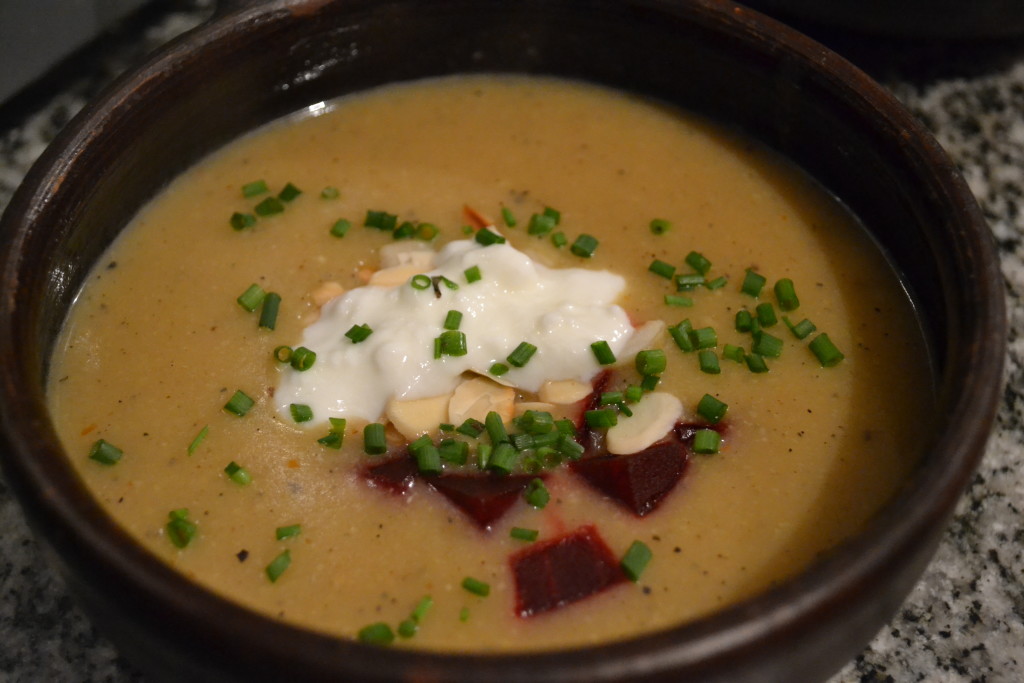On Sunday supplement
Food and Wine
For years I’ve maintained that Argentine cooking is the only cuisine on the planet to eschew soups. Oh, there are stews, big heaping one pot meals – we’ve tackled locro and lentejas in this column – but an actual soup? Most of my Argentine friends and guests assert that they only ate soup as small children, or these days when they’re ill, in which case they resort to chicken bouillon cubes dissolved in hot water.
There is, of course, the Spanish derived puchero, a big boil-up of beef and vegetables, and traditionally served in two courses – first the solids, then the broth. But those same friends and guests tell me that these days, they generally just toss the broth, eat the meat and perhaps a bit of the veg. After all, they’re not poor anymore, they can afford to eat meat, meat and more meat, the rest of it is unnecessary. Shades of my home country post-WWII.
But are there actually soups in the Argentine culinary canon? The answer is, traditionally, yes. In modern life perhaps not so much, but the recipes are still out there. Among my favorite Argentine cookbooks is one that lists not only a dozen different ways to make puchero, but another dozen plus actual soups, most of them surprisingly vegetable based (though all, of course, managing to throw in some meat in some fashion or another – bacon, chorizo, beef, chicken). Another lists a solid five dozen different soups, albeit a few are clearly just foreign imports included for convenience.
At my table, a recent addition to our repertoire has proven to be a consistent hit, and it came about while playing around with several Greek and Middle Eastern dish ideas. It’s based on our old friend cicero, the chickpea. The sopa de garbanzos, or chickpea soup, uses a beef broth base and simmers them away with a mix of vegetables – potato, tomato, carrots and escarole – plus, not surprisingly, a good amount of bacon.
So when it comes down to it, this recipe, other than including chickpeas and potato, has really nothing to do with the Argentine one, but it’s become such a favorite that I can’t not share it with you all. The spicing on it is reminiscent of hummus, which was the intent from the beginning. (Take out the potato and the water and puree the rest with olive oil and you’ve got a killer hummus.)
Hummus Soup
250 grams dried chickpeas, soaked overnight in water
1 large potato
2 large garlic cloves, chopped
100 ml tahini (sesame paste)
peel of 1 lemon
2 teaspoon smoked pepper (ideally something middle eastern like aleppo or urfa biber, but smoked paprika will work)
1 teaspoon cumin, toasted
salt to taste (1-2 teaspoons)
1½ liters water
About as easy as it can get – put all the ingredients into a soup pot (use 1 teaspoon of salt at the start, you can add more later, you can’t take it out once added), bring to a simmer and cook until the potatoes and chickpeas are soft. Puree in a blender or food processor. Add salt if needed. Serves 4-6 as a first course.
Now, I like to add a little something to the soup for texture, and over time we’ve come up with several different options. You can emphasize the chickpeas by adding fried chickpeas to the pureed soup. A personal favorite is to lightly char cauliflower florets in a pan or under the broiler, lightly coated with olive oil and ground sumac. Diced roasted beets. Toasted almonds slivers. Unsweetened plain yogurt, perhaps flavored with some lemon or orange juice. Chives and/or green onions. Spiced olive oil. If you could add it to hummus, you could add it to this soup!
A series of recipes and articles that I started writing for the Buenos Aires Herald Sunday supplement, Food & Wine section, at the beginning of 2012. My original proposal to them was to take local favorite dishes and classics and lighten them up for modern day sensibilities. We’re not talking spa or diet recipes, but at the very least, making them healthier in content, particularly salt, fat and portion size. As time went by, that morphed into a recipe column that, while emphasizing food that is relatively “good for you”, wasn’t necessarily focused on local cuisine. At the beginning of 2013 I decided to stop writing for them over some administrative issues, but it was fun while it lasted.
